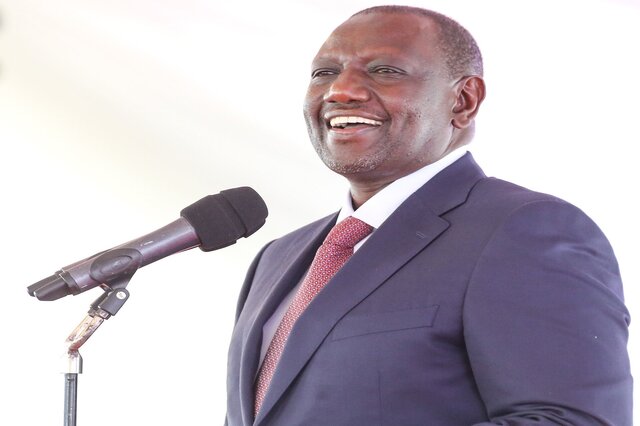Nairobi – Kenyan President William Ruto vowed Thursday to attract $38 billion in investment to transform the economy and change the narrative after mass protests, but it met scepticism from economists and rights groups.
But the east African country has seen multiple so-called Gen Z protests in the last 18 months over economic difficulties, corruption and rights abuses.
In a state of the nation speech on Thursday, Ruto pointed to many improvements under his tenure, from taming inflation and boosting exports to expanding training programmes and internet access.
“Our prospects are brightening, and confidence in Kenya is rising,” he said.
He set out a slew of plans including 50 new massive hydroelectric dams within five to seven years and a vow to “dramatically expand power generation” with an extra 10,000 megawatts in the same period, as well as revamping roads and airports.
He said the plans would cost five trillion shillings – more than a quarter of the country’s GDP – which he admitted could appear “unrealistic, even audacious, for a country like ours”.
Diana Gichengo, of the Institute for Social Justice, a leading economy-focused rights group, said it was “bleak” to promise more spending when Kenya was already suffering “high risk of debt distress driven by economic misgovernance and entrenched corruption”.
Financial expert and CEO Aly-Khan Satchu was also sceptical, telling AFP five trillion shillings was “a long shot”.
With Kenya already heavily in debt, and mass protests over tax rises last year, there are few options for raising revenue.
Ruto said the answer was a new National Infrastructure Fund, raising money through public-private partnerships.
“For every one shilling invested from privatisation proceeds, we aim to attract 10 shillings from long-term investors,” he said.
Economist James Shikwati said the model could work, but warned that “the big animal in the room remains cartels and corruption” misappropriated the funds.
‘Pessimism’
Ruto criticised “the high priests of eternal pessimism” who “want you to believe that our economy is going in the wrong direction”.
But poverty levels have remained stubbornly high – at more than a third of the population, according to the World Bank – and there are few formal jobs for the roughly one million Kenyans who turn 18 each year.
That frustration has fuelled the protests, in which dozens have died at the hands of security forces.
Like many African countries, Kenya is saddled with massive foreign debt, leaving the country spending more on interest payments than on health and education combined.
Doctors, nurses and university lecturers have all been on strike this year over funding shortfalls and unpopular reforms.
The test of Ruto’s plans “is what ordinary people feel about their daily lives: jobs, rent, food and other necessities,” economist XN Iraki told AFP.
Ruto did not address anger over rights abuses, including the killing and abduction of critics and protesters.
Amnesty International this week alleged Ruto’s government had covertly monitored dissidents, enabling security services to track and forcibly disappear them, following anti-Ruto demonstrations.
Rights groups also accuse Ruto’s government of working with Tanzania and Uganda to collectively target their critics.
Follow African Insider on Facebook, X and Instagram
Picture: X/@UDAPartyKe
For more African news, visit Africaninsider.com
Source: AFP


